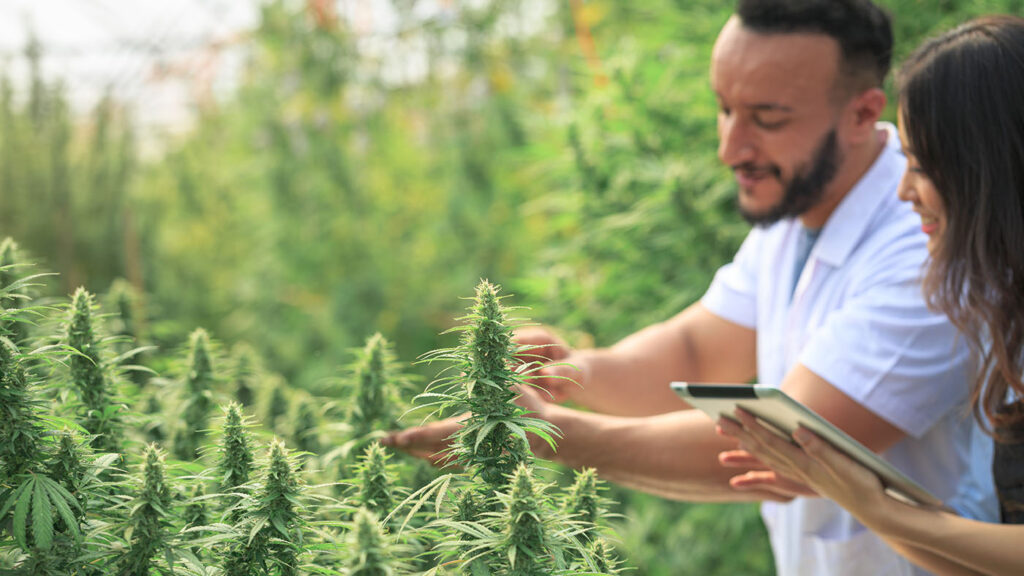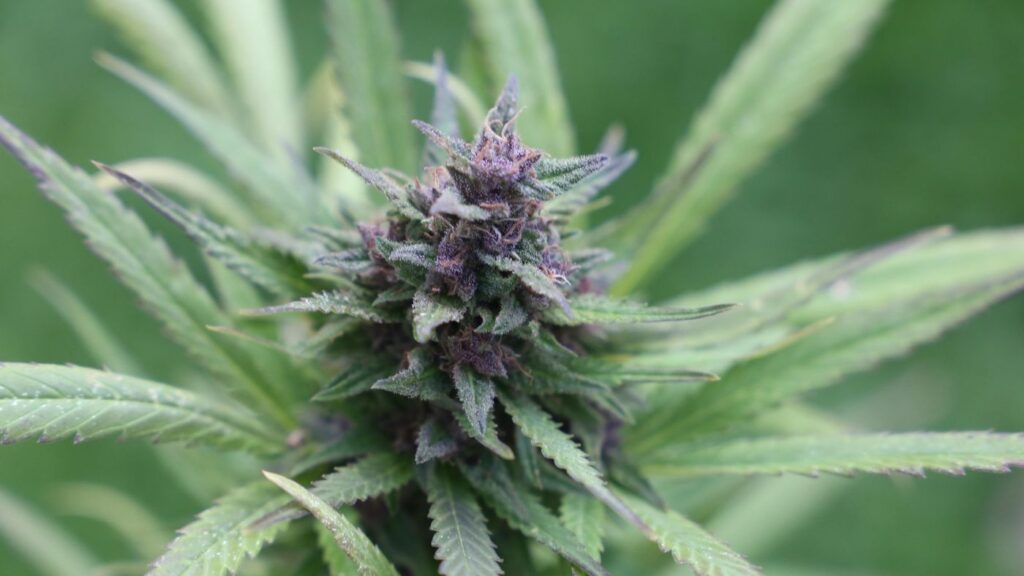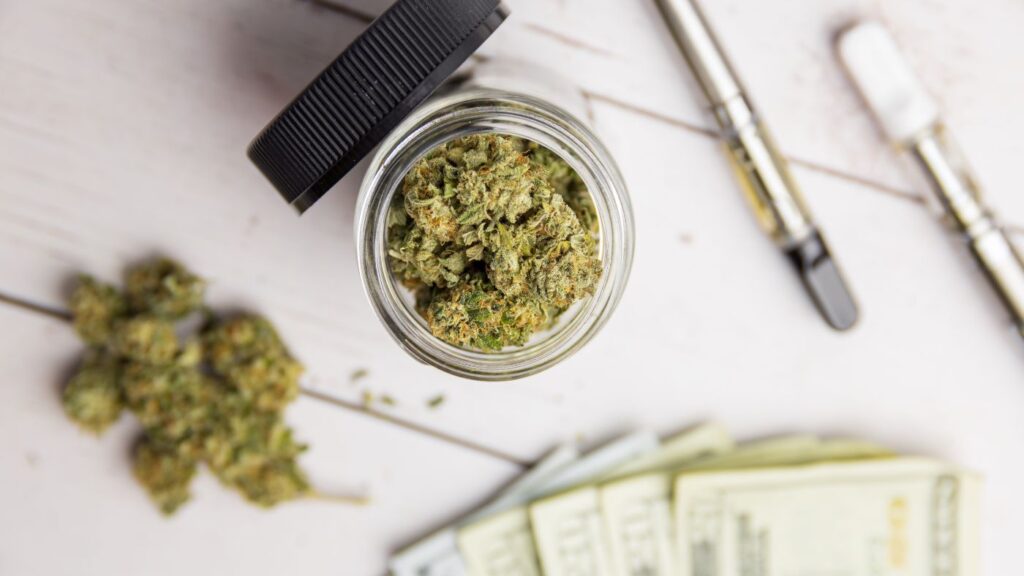Estimated reading time: 6 minutes
Table of contents
- Lack of Planning and Research
- Improper Watering Practices
- Poor Pest Management
- Inadequate Soil Preparation
- Overcrowding Plants
- Poor Genetic Selection
- Planting Too Many Strains
- Inconsistent Nutrient Management
- Inconsistent Environmental Controls
- Using Untested Growing Mediums For Your Cannabis Grow
- Final Thoughts
- Additional Resources
- Consulting Services For Cannabis, Hemp, Psilocybin, and Natural Medicine
- Testimonials and Public Relations
- Latest Articles
- Explore Our Articles
- Free Ebook – Start Your Own Legal Cannabis Business
Whether you’re an experienced cannabis cultivator or just starting, mistakes are inevitable when growing cannabis at a commercial scale. Cannabis cultivation is a dynamic and demanding industry that requires meticulous planning, precision, and expertise. Even minor errors can have significant consequences, from reduced yields to costly financial losses.
In this guide, we’ll explore 10 common mistakes among commercial cannabis growers, their impact on your operation, and practical tips to avoid them. By addressing these challenges head-on, you can enhance your growing practices and achieve consistent, high-quality results.
Lack of Planning and Research
Why It’s a Mistake
Entering the cannabis cultivation industry without thorough planning and research is like sailing without a map. The industry’s rapidly evolving regulations, technological advancements, and market dynamics make preparation non-negotiable. Many growers rush into cultivation driven by the industry’s potential profitability, only to encounter unforeseen challenges.
How to Avoid This Mistake
- Understand Regulations: Laws governing cannabis cultivation vary by region and are often complex. Familiarize yourself with local, state, and federal requirements to ensure compliance.
- Develop a Business Plan: Your business plan should include financial projections, equipment needs, operational strategies, and marketing plans.
- Research Best Practices: Utilize resources such as industry white papers, research articles, and grower forums to stay informed about advancements in cultivation techniques.
- Consult Experts: Partner with industry consultants, like Catalyst BC, for tailored advice on operational optimization and compliance.
Improper Watering Practices
The Problem
Watering cannabis plants improperly—whether through overwatering or underwatering—can compromise plant health and significantly reduce yield.
- Overwatering: Leads to waterlogged roots, oxygen deprivation, and fungal infections like root rot.
- Underwatering: Causes stress, nutrient deficiencies, and stunted growth.
Solutions
- Establish a consistent watering schedule tailored to your plant’s growth stage and environmental conditions.
- Invest in soil moisture meters to monitor water levels accurately.
- Use containers with proper drainage to prevent waterlogging.
- Adjust watering practices based on seasonal or environmental changes.
Poor Pest Management
Why It’s Critical
Pests like spider mites, aphids, and thrips are common in cannabis cultivation and can devastate crops if left unchecked. Neglecting pest management or relying solely on pesticides are common pitfalls.
Best Practices for Pest Management
- Adopt Integrated Pest Management (IPM): This approach combines prevention, monitoring, and control methods.
- Implement Sanitation Protocols: Regularly clean equipment and facilities to minimize pest infestations.
- Encourage Beneficial Insects: Predatory insects like ladybugs can naturally control pest populations.
- Monitor Regularly: Use sticky traps and visual inspections to detect infestations early.
For additional strategies, check out resources on pest management from the University of California Agriculture and Natural Resources.
Inadequate Soil Preparation
Why It’s a Problem
Healthy soil is the foundation of robust cannabis plants. Neglecting to test and amend soil can lead to nutrient imbalances, poor drainage, and stunted growth.
How to Prepare Your Soil
- Test soil for pH, nutrient levels, and organic matter content.
- Amend soil with perlite, vermiculite, or compost to improve texture and fertility.
- Rotate crops or use cover crops to maintain soil health over multiple harvest cycles.
- For a cutting-edge approach, explore vertical farming techniques for optimal soil use.
Overcrowding Plants
Why It’s Risky for Your Cannabis Grow
Plant overcrowding restricts airflow, increases humidity, and promotes the spread of diseases. It also leads to competition for resources like light and nutrients, which negatively impacts plant health.
Prevent Overcrowding
- Follow recommended spacing guidelines for your strain.
- Use pruning techniques like topping or defoliation to manage canopy density.
- Implement trellising systems to optimize space and light penetration.
Poor Genetic Selection
The Impact of Genetics
The genetics of your cannabis strains determine yield potential, pest resistance, and overall quality. Choosing the wrong genetics can result in weak plants, poor potency, and increased vulnerability to pests and diseases.
How to Choose the Right Strains For Your Cannabis Grow
- Source genetics from reputable seed banks or breeders.
- Match strains to your specific climate, grow method, and target market.
- Test multiple strains to determine which performs best in your facility.
For guidance, refer to Leafly’s comprehensive strain database.
Planting Too Many Strains
Why It’s Problematic
While diversity may seem appealing, growing too many strains can complicate cultivation. Different strains have unique growth cycles, nutrient needs, and pest resistance, making it challenging to maintain consistency.
Simplify Your Strain Selection
- Limit your grow operation to 2–3 complementary strains.
- Group plants with similar growth characteristics.
- Standardize nutrient and environmental controls across strains.
Inconsistent Nutrient Management
The Role of Nutrients On Your Cannabis Grow
Cannabis plants require a precise balance of nutrients to thrive. Overfeeding can cause nutrient burn, while underfeeding leads to deficiencies.
Tips for Nutrient Management
- Test soil and water regularly to assess nutrient levels and pH.
- Use high-quality fertilizers with a balanced mix of macronutrients (NPK) and micronutrients.
- Monitor plants for signs of nutrient stress, such as leaf discoloration or curling.
For more information on cannabis nutrition, visit Royal Queen Seeds’ guide to growing cannabis.
Inconsistent Environmental Controls
Why Consistency Is Key
Cannabis is highly sensitive to environmental factors like temperature, humidity, light, and airflow. Fluctuations can lead to stress, uneven growth, and susceptibility to pests.
Maintain Optimal Conditions
- Invest in automated climate control systems.
- Monitor environmental parameters with sensors.
- Use dehumidifiers and HVAC systems to stabilize temperature and humidity.
Using Untested Growing Mediums For Your Cannabis Grow
The Risks
Untested mediums may harbor pests, pathogens, or nutrient imbalances that can harm your plants.
How to Avoid Issues
- Purchase pre-tested and sterilized growing mediums.
- Test mediums for pH and nutrient content before use.
- Sterilize reusable containers and substrates between crops.
Final Thoughts
Cannabis cultivation offers lucrative opportunities, but it’s not without challenges. By avoiding these 10 common mistakes among commercial growers, you can protect your investment, enhance crop quality, and position your business for long-term success.
If you’re seeking expert support, Catalyst BC offers comprehensive solutions for cannabis growers, from operational optimization to genetic selection and pest management.
Additional Resources
Consulting Services For Cannabis, Hemp, Psilocybin, and Natural Medicine
- Consulting Services Overview
- Business Strategy
- Financial Planning
- Cannabis, Hemp, Psilocybin, & Natural Medicine Licensing and Applications
- Facility Design
- StartUp Support
- Genetic Development
- Business Turnaround
- Operational Optimization
- Vertical Farming
- Controlled Environmental Agriculture (CEA)
- State and Country Services Directory
- Blog
- Home
Testimonials and Public Relations
Latest Articles
- Utah Medical Cannabis Pharmacy License Applications Open for 2025: Eligibility, Deadlines, and RequirementsThe Utah Department of Agriculture and Food (UDAF) has officially launched the first application period for two independent medical cannabis pharmacy licenses, running from July 1 through July 31, 2025. Originating from House Bill 54, passed during Utah’s 2025 legislative session, these new pharmacy licenses aim to broaden medical cannabis access in medically underserved areas across the state.
- Cannabis Startup Costs: From Licensing to ProfitabilityStarting a legal cannabis business isn’t just about getting a license—it’s about building a profitable, compliant, and sustainable operation in one of the world’s most capital-intensive and regulated industries. Many entrepreneurs enter this space with many goals, good intentions, and passion, but ultimately fail because they underestimate the cost, complexity, experience, and time required to turn a cannabis license into a thriving business.
- Cannabis License Pitfalls: How to Avoid Common Cannabis Licensing MistakesAs new adult-use programs launch, many entrepreneurs are eager to start growing, processing, or selling cannabis. Excitement runs high, but the industry’s heavy regulations and complex operations can quickly overwhelm even experienced business owners. Common mistakes include underestimating compliance requirements, rushing facility design, skipping proper procedures, and more.
- Maximizing Your Minnesota Cannabis Microbusiness or Mezzobusiness LicenseMinnesota’s new adult-use cannabis law allows microbusinesses (one store, up to 5,000 sq ft indoor, ½ acre outdoor) and mezzobusinesses (up to 3 stores, 15,000 sq ft indoor, 1 acre outdoor) to cultivate, manufacture, sell, and transport cannabis under one license. These vertically integrated licenses offer flexibility, but also come with complex state rules.
- The Recipe for a Top-Tier Cannabis DispensaryOperating a highly reviewed, top-performing cannabis dispensary takes more than simply stocking product and unlocking the doors. It requires operational discipline, regulatory expertise, top-tier customer service, dynamic merchandising, and a culture of accountability and community. With the cannabis industry continuing to expand—and regulations constantly evolving—success is defined by how seamlessly a dispensary integrates compliance, product curation, staff training, and marketing into day-to-day operations.
- Minnesota Lottery Results: June 5 Cannabis License Drawings and What’s NextThe Minnesota Lottery for cannabis business licenses reached a pivotal milestone on June 5, as the Office of Cannabis Management (OCM) conducted randomized drawings for select license types. These lotteries were open to both social equity applicants and general applicants vying for limited licenses to operate as cultivators, manufacturers, and mezzobusinesses. Additionally, a separate lottery was held exclusively for social equity applicants seeking a retail cannabis license.
Explore Our Articles
Business Funding cannabis applications Cannabis Bar Cannabis Business Optmization Cannabis Business Services cannabis careers Cannabis Compliance Cannabis Consumption Cannabis Consumption Bar Cannabis Inventory Management Systems Cannabis Investors cannabis jobs Cannabis Legalization cannabis licensing Cannabis Lounge cannabis marketing Cannabis Operational Procedures cannabis outreach Cannabis Regulations Cannabis Security Cannabis Software Cannabis Startup Cannabis Supply Chain Cannabis Technology Colorado controlled environment agriculture Cultivation cultivation facility Dispensary Design facility design Financial Planning Legal Update Legislation Medical Cannabis Minnesota Natural Medicine Nebraska New York Odor Control Oregon Psilocybin Psychedelics Recreational Cannabis Solventless Extraction Tribal Cannabis Licensing
Free Ebook – Start Your Own Legal Cannabis Business








